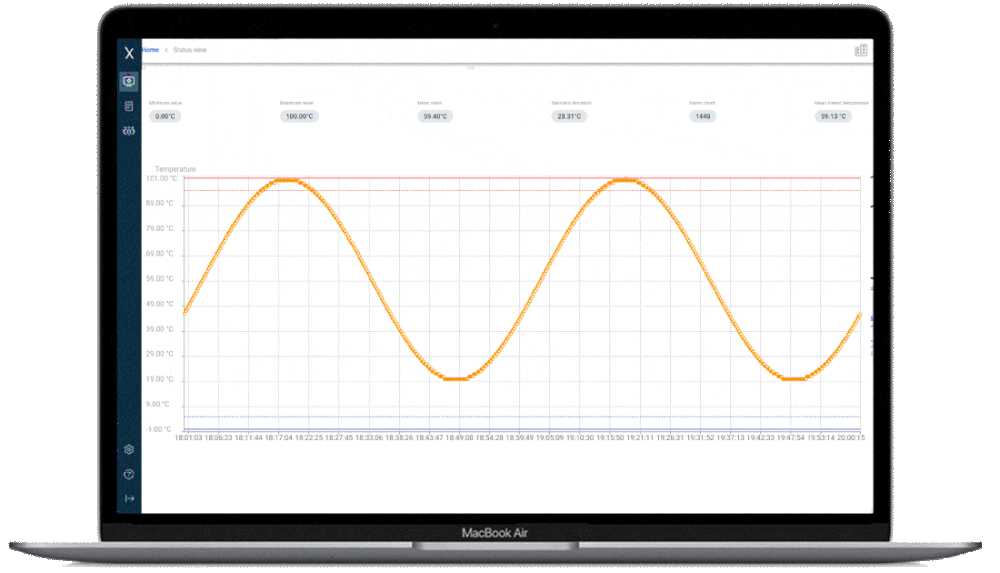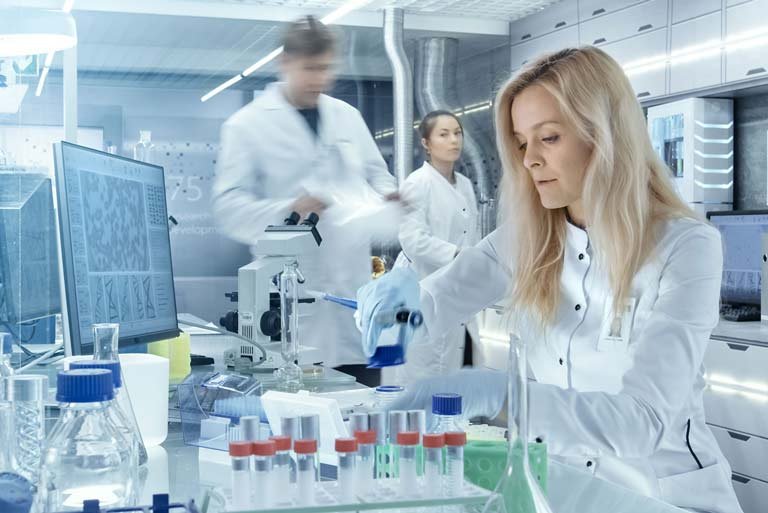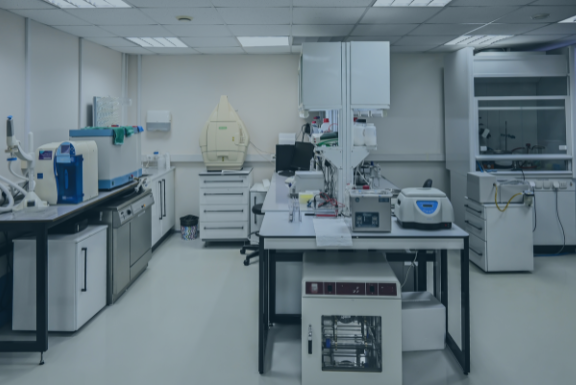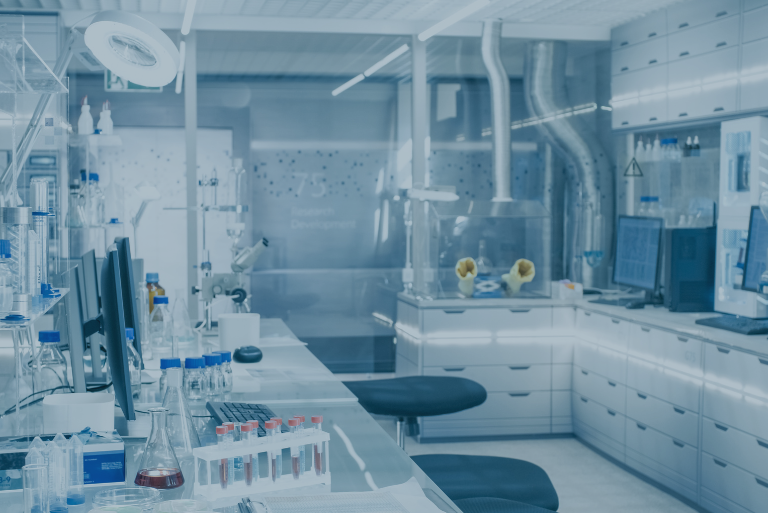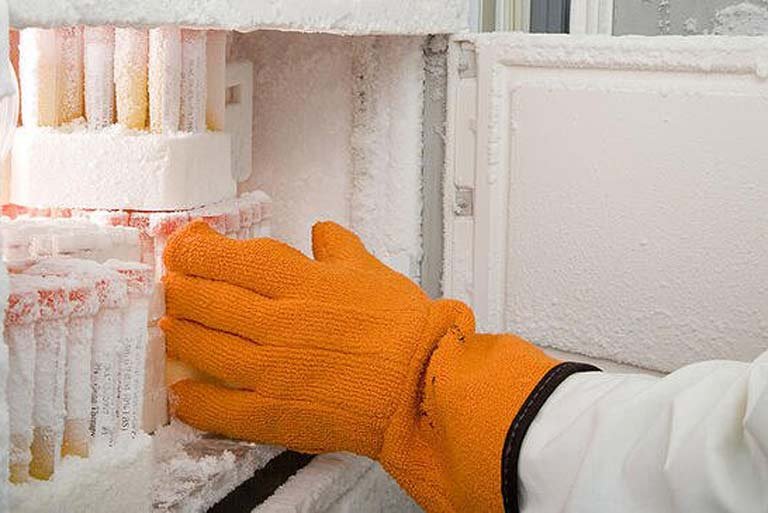Live Agent Environmental Monitoring System for Lab Facilities
24/7 Eyes on Your Facilities
Maintain ideal lab conditions, manage critical emergencies, and protect your facility’s reputation with XiltriX, a 24/7 live agent monitoring solution. Our team is an extension of your facilities team, giving you expertise, vigilance, and peace of mind.
When Facility Equipment Acts Up. We Act.
How does your facilities team manage a critical emergency? What about ongoing compliance? XiltriX has you covered. Whether it's preventive maintenance, energy usage, safety, or ensuring environmental parameters are within range, XiltriX learns the needs of your lab facility, then delivers a reliable EMS through purpose-built hardware, software, and the SafetyNet team.
The Only Facilities Monitoring System with Problem-Solvers Included
With the XiltriX monitoring system, you always have an extra pair of eyes watching over your lab facility. Our SafetyNet Team is on every alarm escalation protocol, and they can diagnose, evaluate, and address any problem, especially in moments of high stress and urgency.
Sensors and Integrations for Lab Facilities Management
| Backup Power | Door Contacts (Open/Close/Recovery) |
| rH&T | HVAC |
| Dry Contacts | Air Flow Monitoring |
| Inline Gas Pressure | Gas Manifold |
| O2 Sensors | Flow Sensors (Internal/External) |
| Light Intensity | Seasonal Trending |
| Particle Counting | VOCs |
| Differential Pressure (DP) | Vacuum Pump |
| TOC Counts | pH Sensors |
| Leak & Flood Monitoring |
+ Many More
Don’t see a sensor you’re looking for? Contact our team to speak to an expert.
Lab Facilities Equipment Monitored by XiltriX
Air Quality
Air quality must be constantly tested for temperature, humidity, and oftentimes differential pressure, VOCs, and airborne particles. XiltriX ensures your facility remains a contaminant-free environment, which is essential for the integrity of samples and the safety of personnel.
-
Particle Counting: Particle counting is a critical aspect of air quality monitoring in a laboratory environment due to the sensitivity of various experiments and processes to environmental contamination. Continuous particle counting is preferred over portable solutions as it offers comprehensive insights and real-time alerts, ensuring the integrity and reliability of your facility’s conditions.
Volatile Organic Compounds (VOCs): Volatile Organic Compounds (VOCs) can contaminate laboratory environments and affect experiments. VOC sensors monitor and measure the presence of harmful organic compounds to maintain air quality.
rH&T: These sensors ensure that ambient conditions remain stable, safeguarding the stability of humidity and temperature that could affect the storage environment.
Seasonal Trending: Focusing on rH&T, seasonal trending involves monitoring and analyzing data over time to understand environmental patterns and their impacts on environmental conditions. This helps in predicting and mitigating seasonal variations that could affect sample integrity and experimental outcomes.
Air Flow Monitoring: Whether you’re monitoring differential pressure between rooms within a facility, or air flow in flow hoods and biosafety cabinets, understanding how air is moving is critical to maintain a controlled environment.
Differential Pressure (DP): these sensors monitor pressure differences across rooms.
Ambient O₂: Monitoring oxygen levels is essential for ensuring a safe and controlled environment. Proper oxygen levels are crucial for both human safety and the integrity of experiments that are sensitive to oxygen concentrations.
Gas Manifolds
Gas manifolds distribute gases to various laboratory equipment. Gas flow sensors are essential for monitoring and regulating the flow of gases through the manifold, ensuring consistent and accurate gas delivery to support operations when tanks need to be switched. XiltriX can monitor all types of gas manifolds ensuring flow rates remain optimal.
-
Gas Flow Sensors: These sensors track gas flow through the manifold.
Inline Gas Pressure: Maintaining precise gas pressure is crucial for various applications. Gas pressure sensors monitor inline gas pressure to ensure stable conditions.
Dry Contacts / 4-20mA Outputs: Digital gas manifolds offer options to remotely monitor parameters such as: level, pressure, automatic switchover, and more. Be sure to consult your vendor to get the options most important for your team.
Backup Power
Backup generators and uninterruptible power supplies (UPS) are critical for ensuring a continuous power supply in your facility. XiltriX monitors the stability and availability of power, preventing operational disruptions that could compromise sample integrity and experimental outcomes.
Door Contacts
XiltriX monitors the status of lab doors, cold storage units and incubators to ensure security and proper recovery if conditions are breached.
Leak & Flood Monitoring
Placing flood or leak sensors under sinks and laboratory equipment, with the capability to send notifications, is a simple and effective safeguard against flooding. XiltriX can discover leaks before they wreak havoc, helping your team attend to them promptly before any damage.
Water Quality
Maintaining high water quality is essential for many processes. XiltriX monitors water purity to ensure it meets required standards.
-
pH: pH levels are critical for many chemical and biological experiments.
Total Organic Carbon (TOC): Maintaining water purity requires ongoing TOC analysis. Filtration systems can sometimes fail, leading to water that falls short of required standards, which may cause contamination. It's crucial to have monitoring systems for every water source in your lab, as fluctuations in TOC can negatively affect the lab environment, manufacturing processes, scientific reproducibility, and even human health.
Water Flow: These sensors can measure flow through a pipe.
Local/Visual Alarms
Local and visual alarms, such as LED indicators and flashing lights are essential for immediate notification of any deviations in cleanroom conditions. Using these alarms, XiltriX provides instant feedback to personnel, allowing for quick corrective actions.
Vacuum Pump
Vacuum pumps are used to create low-pressure environments for various applications. XiltriX can monitor vacuum levels to ensure the effectiveness of the pump, supporting applications that require precise pressure control and preventing potential equipment failure.
Light Intensity
Light intensity affects various processes, including experiments and sample storage. XiltriX monitors light exposure to help maintain optimal conditions, ensuring that light-sensitive experiments and materials are protected from degradation.
Related Content Lab Facilities Monitoring
You Handle the Science. We’ll Handle the Rex.
See how XiltriX protects your biobank in a personalized demo. We’ll answer your questions and tailor the presentation to meet your priorities.


